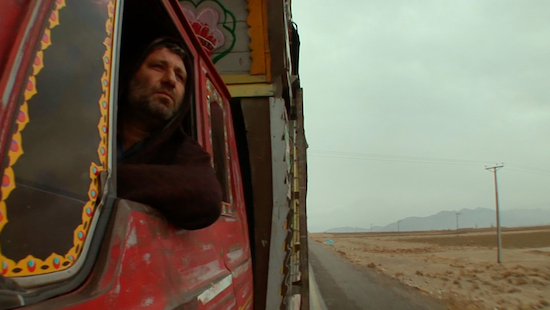This popular article appeared In January of this year, following the Sundance Film Festival.
January is the month of looking forwards and back; this year’s Sundance and Slamdance film festivals gazed in both directions. The luminous future was far grander than coruscations of the past.
The past was least important, although it made the most headlines, especially with people in the movie biz. There were a number of mega-deals—films that sold for $4 million and $9.5 million—that made it seem like we were back a decade. Of course we’re not; those big deals were few, and most of the acquired films sold modestly.
Then there was the CAA Saturday night party that made news for its sex-act show featuring a prancing rabbit, barely-clad women, and fake sex. That’s a two-decade throwback, right? I wondered if it was publicity stunt (we all know everything hits social media instantly), a lapse of judgment, or really no big deal. Someone sent me a video and suggested I should post it in the service of cultural commentary; what do you think?
New energy
But the most important energy in Park City this year has not been the movies, even though the movies were better, more entertaining and more commercial. The most important energy was a repudiation of the brokenness of the past.
There was a time when people thought this was a dinosaur business. A studio head told me, “I’m going to ride this business down into the tar pits.” But it’s the business model that’s the dinosaur, not moviemaking itself. Left to the group-mind, inefficient, technologically antediluvian studio system, film’s future was doubtful.
The people who will revolutionize moviemaking are coming from outside the studio system.
These are the new people, none over 40, most under 35, who are looking at movies in a whole new way—as narrative necessity—and are seeking new ways to connect filmmakers and audiences. Did I just say “seeking”? They’re doing it. They are here at Sundance and Slamdance, and they have just put it out there, with new platforms and models, most funded out of their own pockets or with help from a few evangelized investors. They are all concerned with finding ways to put money in filmmakers’ pockets and have artist-centric purpose statements. True, the money isn’t much yet; they’re digital dimes instead of analog dollars. But a few years ago we were talking about “digital pennies,” so the trend is heading upward.
Check out Yekra, which will distribute to any device with methods for filmmakers to set their own price, distribution terms and build affiliate relationships. Cinecliq, a video-on-demand service that plays on Facebook and leverages social proof and a virtual cinephile community. JuntoBox, a collaborative studio that combines curation, public feedback, traditional production and every kind of distribution. Indieflix, that offers digital distribution and pays filmmakers six cents per minute viewed. Tugg will book a movie in a theatre if enough people want to see it. FilmBreak is a virtual studio, offering filmmakers a fully integrated online solution complete with marketing, financing and distribution capabilities. Slated is a highly-selective, curated online marketplace for investing in film.
That’s not half of them. It’s been flattering to see some of my observations (from 2011, about the vast number of films that need to find audiences) quoted in their business plans.
It’s not surprising these agents of change are looking to fill a market need. It’s also not surprising that no movie studio executives were trying to make relationships with them and take notes. Not surprising, but too bad.
What will work?
I cannot tell yet which of these new approaches will work. Probably a combination of them. I’m sure of this much: the new models that work will succeed at scale (they will grow big), quality (they will have breakout hits), and audience reach (they will be effective marketing engines).
Moviemaking is easy, cheap and democratic. So is distribution, with a few technical hurdles relating to a lack of common standards among devices. But marketing…marketing is harder than ever before, harder than getting past security at some of those Sundance parties, and frighteningly more expensive.
Social media does not yet sell tickets. Facebook “likes” don’t equal dollars. Every ticket sold is sold at retail; movie revenue is grassroots and local. Tickets, whether for a cinema on an online stream, are sold one-by-one. How does that happen?
There’s an inverse relationship between so-called “reach” and effectiveness. Here’s what I mean.
What are the most effective ways to communicate (in order, most to least)?
1. Face-to-face
2. Phone call
3. Email or text message
4. Facebook
5. Twitter
How can you reach the most people (in order, most to least)?
1. Twitter
2. Facebook
3. Email or text message
4. Phone call
5. Face-to-face
See the problem?
If the marketing problem can be solved—if marketing can become far less expensive through the efficiencies and algorithms of social media—well then, the new world will be here.
And now, personally
For me, it’s been a look back that portends a future. I’m not here with a studio this year, so we don’t have a big house with assistants running around. Instead I joined some new friends, and we’ve been here in a little condo, five of us some nights, sleeping on couch, floor and bed. As we move away from older systems, it’s fitting for some opulence to move away, too.
I’ve been speaking on some panels, and I’ll be signing my newly-published book, Inside Track for Independent Filmmakers: Get Your Movie Made, Get Your Movie Seen and Turn the Tables on Hollywood. (At Dolly’s Bookstore, 510 Main St., 2:00 pm MST, Thursday, Jan. 24, 2013. If you’re in Park City, come join me!)
As I was realizing there will be much more information to put into the next edition of the book, big trucks pulled up along Main St. to tear down the sponsored-product lodges and send back cases of promoted Stella and Stoli. If you’re imagining all that stuff being carted away as metaphor for retiring old ways of doing things, you’d be right. Because it’s not about the swag, the promoted booze or the gifting suites. It’s about the way moviemaking is reshaping itself, from the margins in.
Images from top: (1) “The Way, Way Back,” written and directed by Nat Faxon and Jim Rash; from left, Zoe Levin, Steve Carell, Toni Collette, Sam Rockwell and Liam James; photo by Claire Folger/WWBSP. Sold to Fox Searchlight for $9.5 million at Sundance. (2) “Without Shepherds,” played at Slamdance, Cary McClelland (director/producer), Imran Babur (co-director/ cinematographer); (3) Sundance Filmmakers Lounge; (4) Promo booze going back home.



